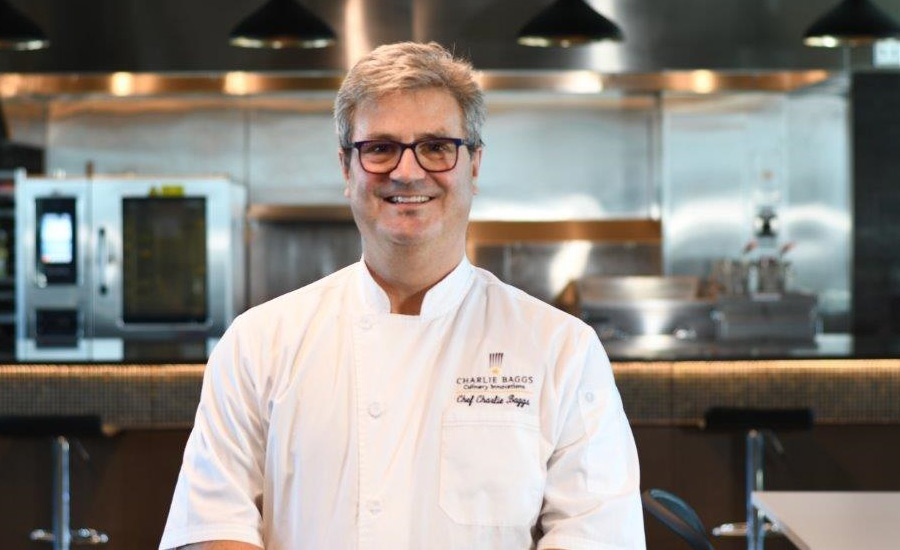The Bottom Line:
- Focusing on the consumer is key
- Introduce product testing early in the process
- Pilot plants facilitate trying out changes in product and process.
Launching a new snack or bakery product line is a significant investment—in terms of financial outlay, time put in, resources expended, and other factors. What’s more, failing to take the time to get everything right could mean your company takes a hit to its reputation, losing sight in the eyes of customers and consumers.
Before unleashing a new item or product line onto the world, testing the waters can give a producer peace of mind. This can mean anything from setting up a pilot plant to determine if the right technology is in place and optimally configured, to conducting consumer and sensory testing, to determining the right quality standards—or all of the above.
To learn more about developing and testing prototypes in snack and bakery environments, Snack Food & Wholesale Bakery connected with a number of experts with knowledge in the area:
- Charlie Baggs, president and executive chef, Charlie Baggs Culinary Innovations
- Rachel Orona, director, client services, west, Curion
- Jenn Farrell, director of R&D, Charlie Baggs Culinary Innovations
Jenni Spinner: Could you please share your thoughts on how the snack and bakery production market has evolved, and why testing and prototyping might be becoming more important to producers?
Jenn Farrell: Data-driven R&D has become more important than ever; knowing the market, keeping up with trends data, all lead to a quicker and more streamlined development process. This saves time, money, and resources in the long run. It can also cut down on risk associated with launching new products, reminding us that the consumer is the reason we do what we do.
Rachel Orona: There is definitely a large focus on health and wellness in snacks and baked goods, as well as a push toward organic, natural, and plant-based ingredients. We are seeing initiatives to lower sugar levels or incorporate sugar replacers as well as a removal of artificial coloring, which supports the larger focus of better-for-you trend. Also, packaging smaller portions with individually packed products or mini packs for snacks on the go has been growing.
On the flipside, we are also seeing emerging trends around bold flavors and indulgence following the pandemic. This includes products that are perceived as rich textures or premium placement products. People want to consume products that make them feel comforted, and it is a plus if the health factor is included for the healthy indulgence evolution.
The category of snacks and baked goods is huge and continuing to grow, so it’s important to protect your brands and products by utilizing product testing early in the development process. We have seen brands get excited about prototypes based on internal tastings and move forward quickly to scale up while leaving out the step of conducting consumer product testing with their target users early in the process. Consumer testing is conducted later in the process or right before launching and the products don’t perform as well as expected. This adds time and can delay the product launch as well as adding additional development cost.
At Curion, we help clients save time and cost by implementing tests early on for ideas or concepts, unmet consumer needs and whitespace, co-creation with target users, assessing how well a new product is delivering on the concept, and so much more.

JS: What are some of the key questions managers should ask and answer before diving into pilot plants, determining standards, conducting consumer testing, etc.?
Charlie Baggs: It is important to ask what is likely to be the output and demand on the pilot plant. Those are the key objectives of the pilot facility.
RO: There are so many pieces that come together to turn into a successful snack or baked goods product. What does the target consumer consider to be most important to fulfill an unmet need? Which concept of the many is the answer to what consumers are interested in and solves a problem for them? Is the feedback we’re receiving truly objective and free of bias? What is the gold standard product for our target consumers in our target category? What are the top flavors that consumers will accept and re-purchase? Can this concept be scaled up without changing its quality and flavor, from a prototype built in a lab to a pilot plant to a full-scale operation? How should the packaging look in terms of shape, design, multi- or single-serve, label design, ease of use, storage and any other factors impacting packaging? And one of the most important: Is the product experience and product performance aligned, or is there dissonance? Consumer concept and product testing can answer all of these crucial questions, which is why it is so important.
JF: Besides the typical product development/formula review done before scale-up, It’s always important to check in with your cross-functional groups (food safety, quality, regulatory compliance, etc.) to ensure the formula has complete compliance.
JS: Please share your insights and advice for snack and bakery producers looking to start (or refine current practices) in pilot plant operation.
RO: The advantage of using a pilot plant versus going to the full-scale production line is the ability to test a wider scope of prototypes in the early stages of development and often more quickly than waiting for availability on the production line. A more accurate, true-to-market product can be tested with target consumers, prior to moving forward with full-scale manufacturing. Consumer testing results can be leveraged to make changes to products in a pilot plant much easier than full-scale manufacturing to help fine-tune products and mitigate risk before they’re launched.

JS: What about development of “gold” standards?
JF: We work with a culinary team to create hybrid gold standards. A hybrid gold standard is a culinary recipe that is partially converted with ingredients that are procured from suppliers; we focus on bringing flavor while using ingredients that are source-able.
RO: Developing a gold standard can be determined by sales data, taste test results, or previous research. It can be your own product such as the top seller that you’re trying to meet or exceed in consumer acceptability or a direct competitor. With product testing, consumers are exposed to a variety of products in a category to determine which product is most preferred, and why as well as if there are segments of consumers who have different preferences. There are a handful of product testing methods that can be implemented to help here, such as Curion QDA (Quantitative Descriptive Analysis) to test large numbers of products in the category and determine how products are different. QDA results can be overlayed with consumer results to understand not only what consumers like best, but how the products differ from a sensory perspective. QDA is also a useful tool to narrow down which products to test with consumers. There are often 100 attributes or more that can be assessed across appearance, aroma, flavor and texture including off-notes, nuanced flavors, and much more—all contributors to the drivers of liking of a product.
JS: What are your thoughts on scale-up?
JF: It’s a similar approach to the pilot plant, but more communication required with plant staff, especially when it comes to leveraging expertise on the line.
JS: What about conducting consumer testing?
RO: One of the first places to start can include qualitative research when exploring a new concept or rapid prototyping to help guide the design of a new product or a category appraisal to determine the competitive landscape. A category appraisal will guide understanding of where your products sit on a consumer liking map relative to the competition and if any renovation is needed. You also may want to find out more about the target consumer and understand more about the context in which your product is used. A Central Location Test (CLT) is great for comparing your product to multiple other products, however sometimes a home-use test (HUT) is a better option as consumers can test the product in the comfort of their own home and use the product in the way they normally would. There is a large pool of product testing methods that exist, and Curion covers a wide variety of product experience and performance testing from concept exploration through to product renovations.
JF: Bring in experts to do it right; you will not regret it. This data is invaluable to the development process.
JS: Finally, please share some insights about sensory analysis
RO: Sensory or descriptive testing can be used as a quality control method on a production line to determine if the product is meeting quality from a sensory perspective. In addition, if consumer results show that the product doesn’t meet consumer expectations, sensory results can provide answers to how the sensory characteristics differ from the more well-liked products and what needs to change. It can also be used as a shelf-life measurement. At what point in time is a product still acceptable from a sensory perspective? Engaging our trained sensory panelists can help determine these answers.
JS: What experience does your operation have in these areas? Please share any products or services you might have to offer.
CB: We do offer prototype development, interactive development of products based on consumer feedback. When aligned with a co-packer or pilot facility we are not limited on the type of products we will develop. Our internal proprietary process works across platforms.





.png?height=200&t=1669229841&width=200)